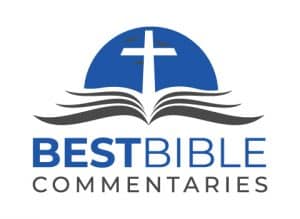The Bible is a sacred text revered by millions worldwide, and its translations play a significant role in shaping Christian understanding. The New Living Translation (NLT) and the New American Standard Bible (NASB) are two widely recognized versions.
While both translations seek to convey the biblical message accurately, they differ in their approaches.
The NLT aims to provide a contemporary and easy-to-understand interpretation, utilizing modern language and idioms. On the other hand, the NASB emphasizes literalness and precision, striving to maintain word-for-word fidelity to the original Hebrew, Aramaic, and Greek texts.
Examining these distinctions can illuminate the unique qualities of each translation and help individuals choose the one that resonates best with their needs and preferences.
Also, see the Bible Translation Comparison Chart to learn more.

A Formal vs. Dynamic Equivalent Bible Translation
The NASB is an essentially formal equivalent translation. Also known as a word-for-word translation, this approach aims to maintain a close correspondence to the original language of the biblical texts.
It focuses on preserving the original languages’ structure, grammar, and individual words as faithfully as possible. This approach prioritizes accuracy and precision, often rendering it more literal.
| Feature | NASB | NLT |
|---|---|---|
| Translation Method | Essentially Formal Equivalent | Dynamic Equivalent |
| Language Style | Formal and highly literal | Balanced and more conversational |
| Readability | Can be more challenging for some | Generally easier to read and understand |
| Accuracy | Emphasizes word-for-word accuracy | Emphasizes thought-for-thought accuracy |
| Word Usage | Retains more archaic language | Paraphrases and clarifies the meaning |
On the other hand, a dynamic equivalent translation, also known as a thought-for-thought translation, seeks to convey the meaning and intent of the original text in a way that is more accessible to modern readers.
It emphasizes the overall message and concepts rather than adhering strictly to the original words and syntax. This approach may use more contemporary language, idioms, and paraphrasing to ensure clarity and readability.
The NASB Is Less Concerned about Inclusive Language
Gender-inclusive language in Bible translation refers to an approach that seeks to use language that encompasses and represents both men and women in the text rather than exclusively using male-oriented terminology.
| Feature | NASB | NLT |
|---|---|---|
| Manuscript Basis | Relies on the Masoretic Text (OT) and Nestle-Aland Greek Text (NT) | Draws from a variety of manuscripts |
| Inclusive Language | Less inclined towards gender-neutral | More likely to use inclusive terms |
| Denominational Use | Popular among conservative denominations | Widely used across various groups |
| Study Resources | Offers a variety of study editions | Offers a variety of study editions |
| Popularity | Known for its accuracy and precision | Known for its readability and accessibility |
It aims to avoid the inherent bias or potential exclusion from using exclusively male pronouns or terms when referring to humanity or mixed-gender groups.
Many Bible translations have traditionally used masculine pronouns and nouns as a generic or inclusive term for both genders.
However, gender-inclusive translations strive to incorporate more gender-neutral or gender-inclusive language to accurately reflect the text’s original meaning while being more inclusive and representative of both men and women.
Also, see Is the NASB a Good Translation? to learn more.

What is the Masoretic Text?
The Masoretic Text is the authoritative Hebrew text of the Jewish Bible, known as the Tanakh or the Old Testament in Christian terminology. It is the primary textual foundation for studying and interpreting the Hebrew Scriptures.
The Masoretes, a group of Jewish scholars active between the 6th and 10th centuries A.D., meticulously preserved and transmitted the text, ensuring its accuracy through detailed vowel pointing, pronunciation marks, and other textual notations.
What is the Nestle-Aland Greek Text?
The Nestle-Aland Greek Text, also known as the Nestle-Aland Novum Testamentum Graece, is a critical edition of the Greek New Testament. It is widely regarded as one of the most authoritative and influential editions of the study of the New Testament in its original Greek language.
The Nestle-Aland Greek Text is based on an extensive examination of Greek manuscripts, papyri, and other ancient sources, to reconstruct the most accurate and reliable version of the New Testament.
It incorporates textual variants and critical apparatus, providing scholars and translators with valuable information about the variations found in different manuscripts.
Also, see Is the NLT a Good Translation? to learn more.
What Is the History of the New Living Translation?
The NLT translation project began in the 1980s and was overseen by Tyndale House Publishers. It was intended to be a dynamic equivalent translation, aiming to provide a contemporary and easy-to-understand rendering of the biblical text.
The NLT’s translation team comprised over 90 biblical scholars and translators from various denominational backgrounds. The initial edition of the NLT was published in 1996, with subsequent revisions released in 2004 and 2007.

What Is the History of the New American Standard Bible?
The NASB has a longer history, dating back to the American Standard Version (ASV) in the late 19th century. The ASV was published in 1901 to revise the King James Version (KJV).
In the 1950s, a group of conservative biblical scholars desired a more modern and accurate translation, leading to the development of the NASB. The first edition of the NASB New Testament was published in 1963, with the complete Bible released in 1971.
Conclusion
In conclusion, the NLT and the NASB represent two distinct approaches to Bible translation.
The NLT seeks to provide a contemporary and accessible interpretation, utilizing dynamic equivalence to convey the biblical message in modern language. On the other hand, the NASB emphasizes formal equivalence, prioritizing word-for-word accuracy and fidelity to the original languages.
These differences in translation philosophy result in variations in style, readability, and interpretive choices. Both translations offer unique strengths and cater to different readers’ preferences, enabling individuals to engage with the Scriptures in ways that resonate with their needs and understanding.
Related Questions
The Bible is a text of immense importance to millions worldwide, and its various translations contribute to diverse interpretations and understandings. Among the widely known versions are the New...
When choosing a Bible for study or personal reading, understanding the differences between various translations is vital. Two such versions, the English Standard Version (ESV) and the New American...
